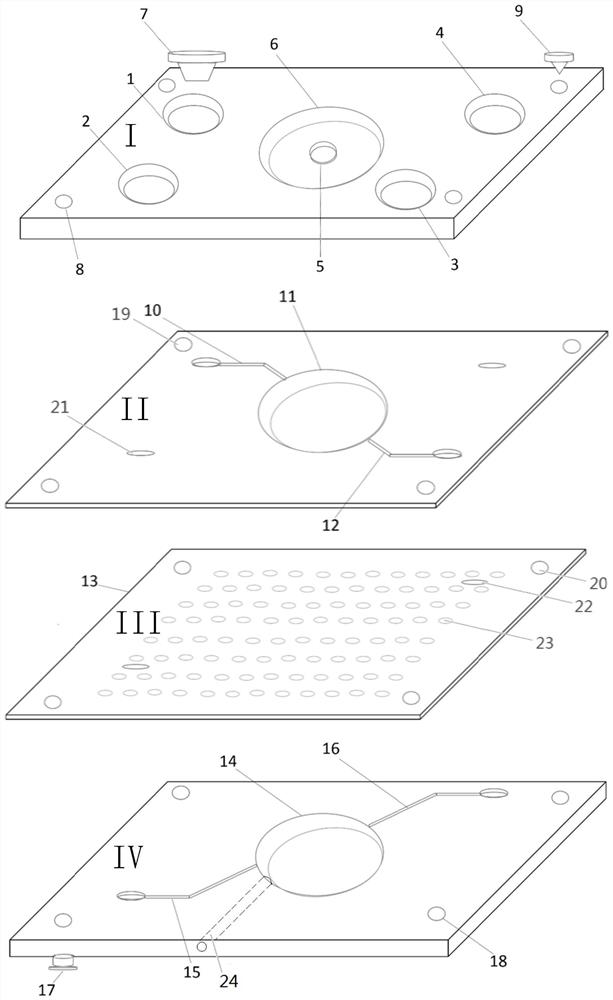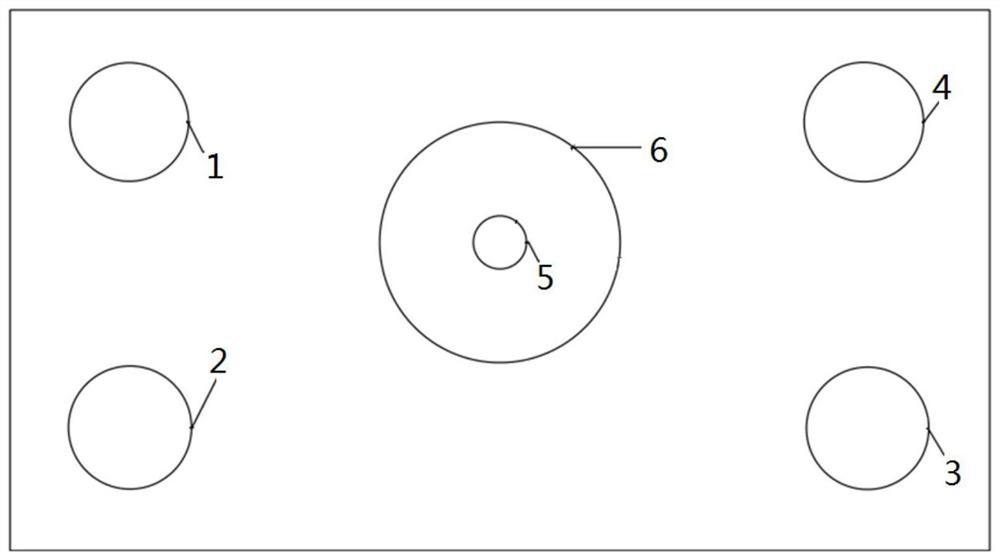Micro-fluidic chip for multi-cell co-culture and preparation method thereof
A microfluidic chip and cell culture technology, which is applied in the field of cell engineering and bionic organ engineering, can solve the problems of ineffective multi-organ interaction, neglected effects, and underestimated risk of nephrotoxicity, so as to speed up drug development Process, the effect of reducing development costs
- Summary
- Abstract
- Description
- Claims
- Application Information
AI Technical Summary
Problems solved by technology
Method used
Image
Examples
Embodiment Construction
[0041] The present invention will be described in further detail below with reference to the accompanying drawings and embodiments, but the protection scope of the present invention is not limited to this embodiment.
[0042] see figure 1 and figure 2 , the microfluidic chip for multi-cell co-cultivation of the present invention mainly includes a micro-device made of PDMS, and the micro-device is supported by a glass substrate. The microdevice has a total of four PDMS substrates, an upper layer, a middle layer, a porous membrane and a lower layer. These PDMS substrates are stacked in sequence and modified with an extracellular matrix (ECM), thereby constructing a central cell culture channel located inside, the upper layer. The channel and the lower channel make the microdevice meet the needs of studying the interaction between cells while realizing the co-culture of multiple cells.
[0043] like figure 1 As shown, the upper layer PDMS substrate (referred to as substrate 1...
PUM
| Property | Measurement | Unit |
|---|---|---|
| length | aaaaa | aaaaa |
| width | aaaaa | aaaaa |
| height | aaaaa | aaaaa |
Abstract
Description
Claims
Application Information
 Login to View More
Login to View More - R&D
- Intellectual Property
- Life Sciences
- Materials
- Tech Scout
- Unparalleled Data Quality
- Higher Quality Content
- 60% Fewer Hallucinations
Browse by: Latest US Patents, China's latest patents, Technical Efficacy Thesaurus, Application Domain, Technology Topic, Popular Technical Reports.
© 2025 PatSnap. All rights reserved.Legal|Privacy policy|Modern Slavery Act Transparency Statement|Sitemap|About US| Contact US: help@patsnap.com


